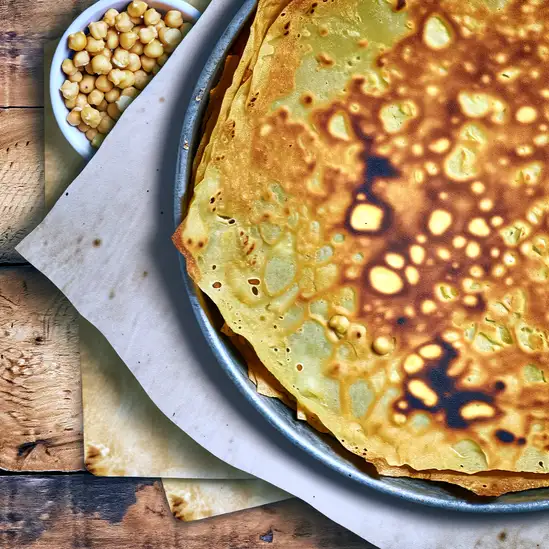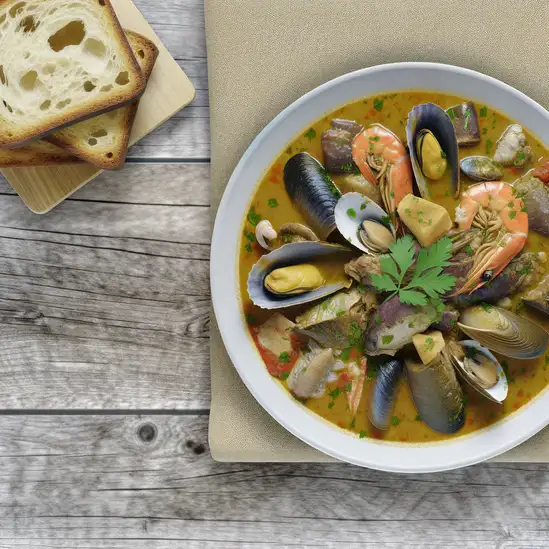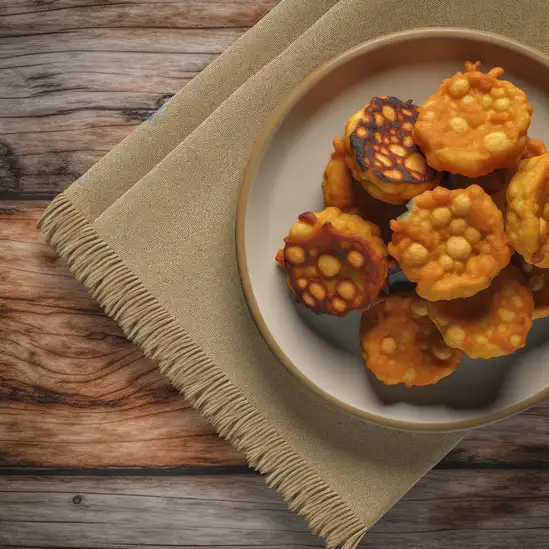



Marseille has this incredible energy that grabs you the moment you step off the train. It’s a city where the salty breeze from the Mediterranean mingles with the aroma of fresh seafood sizzling in the air,and the chatter of locals spills out from bustling markets and cozy cafés. Walking through the Vieux-Port,you’ll see fishermen unloading their catch,vibrant boats bobbing gently,and street musicians weaving melodies that feel like the heartbeat of the city. It’s raw,lively,and utterly alive. What I love most about Marseille is its unapologetic character. It’s a melting pot of cultures,with influences from North Africa,Italy,and beyond,all blending into a rich tapestry of flavors,sounds,and colors. The narrow streets of Le Panier neighborhood invite you to get lost,revealing colorful murals,artisan shops,and the scent of freshly baked pastries wafting from corner bakeries. There’s a warmth in the way people greet you here,a genuine openness that makes you feel like you belong. And then there’s the food—oh,the food! Bouillabaisse,the city’s iconic fish stew,is a must-try,bursting with the taste of the sea and herbs from nearby hills. Pair it with a glass of rosé,and you’re tasting Marseille’s soul. Whether you’re watching the sunset from the rocky shores of the Calanques or sipping coffee in a sun-dappled square,Marseille invites you to slow down,soak it all in,and fall in love with its imperfect,vibrant charm.
The information on this page is currently being reviewed by Tripkliq and should be used as a guide only
Eng word: Hello
Eng pronunciation: bohn-zhoor
Local language: Bonjour
Eng word: Goodbye
Eng pronunciation: oh ruh-vwahr
Local language: Au revoir
Eng word: Thank you
Eng pronunciation: mehr-see
Local language: Merci
Eng word: How much
Eng pronunciation: kohm-byen
Local language: Combien
Eng word: Toilet
Eng pronunciation: twa-let
Local language: Toilettes
Eng word: Help me
Eng pronunciation: eh-deh mwah
Local language: Aidez-moi
Eng word: Yes
Eng pronunciation: wee
Local language: Oui
Eng word: No
Eng pronunciation: noh
Local language: Non
Eng word: Excuse me
Eng pronunciation: ehk-skew-zay mwah
Local language: Excusez-moi
Marseille was founded around 600 BC by Greek settlers from Phocaea, making it one of the oldest cities in Europe. Originally named Massalia, it served as a major trading post and gateway between the Mediterranean and the rest of Europe.
The French national anthem, La Marseillaise, was composed in Marseille in 1792 by Claude Joseph Rouget de Lisle, gaining its name after being sung on the streets of Paris by volunteers from Marseille during the French Revolution.
The Vieux-Port (Old Port) of Marseille has been the beating heart of the city for over 2,600 years. Serving as a major Mediterranean maritime hub, it played a crucial role in the development of Marseille as a center of trade and immigration.
Overlooking Marseille, the Basilique Notre-Dame de la Garde is affectionately known as "La Bonne Mère" (The Good Mother). This Neo-Byzantine church, completed in 1864, is a symbol of protection for the city’s inhabitants and sailors.
The Château d'If, famous for its role in Alexandre Dumas’ novel "The Count of Monte Cristo," is a fortress turned prison located on the If Island, off the coast of Marseille. It has become a popular tourist attraction, offering insights into the history of French incarceration and breathtaking views.
Marseille has a long tradition of soap making, with its famous Savon de Marseille being made for over 600 years. The city was a major center for the soap industry, thanks to the abundant olive oil and alkaline ash from local plants used in its production.
The city boasts impressive remnants of its Roman past, including the ancient docks known as Les Docks Romains, which have been preserved as a museum. These ruins offer a glimpse into the city's commercial activities during Roman times.
The Panier district, one of the oldest parts of Marseille, is known for its narrow, winding streets, colorful buildings, and historical charm. It has been inhabited since the city was founded by the Greeks and remains a vibrant community today.
The city influenced many famous Impressionist painters, including Paul Cézanne, who was born nearby and often depicted the rugged beauty of Marseille’s landscapes in his works.
In Marseille Prefecture, the most common Power Adaptor is Type C, Type E.



A thin, crispy chickpea pancake that is a popular street food in Marseille, typically seasoned with black pepper and enjoyed hot.

A traditional Provençal fish stew made with various types of fish, shellfish, and aromatic herbs, typically served with a side of rouille sauce and crusty bread.

Fried chickpea flour cakes that are crispy on the outside and soft on the inside, often enjoyed as a snack or appetizer.

A garlic mayonnaise that is a staple in Provençal cuisine, often served with boiled vegetables, fish, or as a dip.

A hearty dish made from sheep's feet and stuffed tripe, slow-cooked in a rich tomato and herb sauce, showcasing the region's rustic flavors.

Traditional boat-shaped biscuits flavored with orange blossom, often enjoyed with tea or coffee, and a local specialty of Marseille.
Imagine stepping into a place where the sun seems to linger just a little longer,casting a golden glow over pastel-colored buildings and the sparkling Mediterranean Sea. That’s Nice for you—a city that effortlessly blends the relaxed charm of a seaside town with the vibrant pulse of French culture. Walking along the Promenade des Anglais,you’ll feel the gentle sea breeze on your skin and hear the rhythmic crash of waves mingling with the laughter of locals and tourists alike. The scent of freshly baked baguettes and rich espresso drifts from cozy cafés,inviting you to pause and savor the moment.
Nice has this wonderful rhythm,a mix of old-world elegance and laid-back joie de vivre. The narrow streets of the Old Town buzz with life—vendors calling out their colorful produce,the clinking of glasses in bustling bistros,and the occasional melody from a street musician. It’s a place where you can lose yourself exploring vibrant markets,then find a quiet spot to watch the sunset paint the sky in shades of pink and orange over the harbor.
What really makes Nice stand out is its effortless blend of cultures—French sophistication meets Mediterranean warmth. Whether you’re nibbling on a socca (a chickpea pancake) or sipping rosé at a terrace café,there’s a genuine friendliness that makes you feel like you belong. It’s a city that invites you to slow down,breathe deeply,and soak in the simple pleasures of life by the sea.
Imagine stepping into a place where the Mediterranean sun kisses your skin and the salty breeze carries whispers of old-world glamour—that’s Cannes for you. This city isn’t just about the famous film festival; it’s a vibrant mosaic of sun-drenched beaches,bustling markets,and elegant promenades that invite you to slow down and savor life. Walking along La Croisette,you’ll catch the rhythmic lapping of waves against the shore,the clinking of glasses from chic seaside cafés,and the soft murmur of conversations in a dozen languages. It’s a place where luxury feels effortless,yet warmly inviting.
The scent of fresh lavender and sea salt mingles with the aroma of freshly baked baguettes and rich espresso from corner boulangeries. Strolling through the old town,Le Suquet,you’ll find narrow cobblestone streets lined with colorful shutters and lively terraces where locals and visitors alike share laughter and stories over glasses of rosé. The city pulses with a creative energy,from the art galleries tucked away in quiet corners to the lively markets bursting with vibrant produce and fragrant herbs.
What makes Cannes truly special is its blend of sophistication and authenticity. It’s a city that celebrates beauty—in its architecture,its cuisine,and its people—without ever feeling pretentious. Whether you’re savoring a plate of fresh seafood by the harbor or watching the sunset paint the sky in shades of pink and gold,Cannes invites you to experience a slice of the French Riviera’s magic in a way that feels personal and unforgettable.
If you ever find yourself dreaming of a place where the Mediterranean sun kisses warm,golden stone streets and the scent of salty sea mingles with fresh herbs from nearby markets,Ajaccio is that kind of magic. Walking through its narrow alleys,you’ll hear the gentle hum of locals chatting over espresso,the clink of glasses from cozy cafés,and the distant call of seagulls above the harbor. It’s a city that feels alive but never rushed,where history and everyday life blend effortlessly.
Ajaccio’s charm is deeply tied to its roots—this is Napoleon Bonaparte’s birthplace,and you can feel the weight of history in the grand old buildings and the proud,welcoming spirit of its people. But it’s not just about the past; the city pulses with vibrant Corsican culture. You’ll catch the aroma of freshly baked pastries,the sharp tang of local cheeses,and the sweet,earthy notes of chestnut honey at the markets. Sitting by the waterfront,watching fishing boats bob gently on turquoise waters,you might even taste the freshest seafood you’ve ever had,paired with a glass of crisp Corsican wine.
What really stays with you is the atmosphere—warm,unpretentious,and full of life. Whether you’re wandering the sun-dappled squares,exploring the rugged coastline just beyond the city,or simply savoring a gelato while watching the sunset paint the sky in shades of pink and gold,Ajaccio invites you to slow down and soak it all in. It’s a place that feels like a heartfelt welcome,one you’ll want to return to again and again.
A luxurious city-state on the French Riviera,famous for its Monte Carlo Casino,yacht-filled harbor,and proximity to the Mediterranean Sea.
ExploreBarcelona feels like a vibrant mosaic where every corner pulses with life and color. The moment you step onto its sun-drenched streets,you’re wrapped in a warm Mediterranean embrace—salt in the air,the distant hum of waves mingling with lively chatter from bustling cafés. The city’s energy is contagious,a blend of old-world charm and modern creativity that invites you to slow down and savor each moment.
Wandering through the narrow alleys of the Gothic Quarter,you’ll hear the soft clinking of glasses and the melodic strum of a street guitarist,while the scent of fresh-baked bread and roasting coffee drifts from cozy bakeries. Barcelona’s architecture is like a living art gallery—Gaudí’s whimsical buildings,with their undulating lines and vibrant mosaics,feel almost dreamlike against the bright blue sky. It’s a place where history and imagination dance together.
Food here is a celebration in itself. Imagine biting into a perfectly crispy,golden croqueta or savoring the rich,smoky flavors of a traditional paella,all washed down with a glass of chilled cava. The city’s markets,like La Boqueria,burst with colors and aromas—ripe tomatoes,fresh seafood,and fragrant herbs—that make you want to taste everything.
What makes Barcelona truly special is its spirit:a city that lives passionately,where locals and visitors alike gather to share stories,laughter,and the simple joy of being in a place that feels both timeless and alive. Trust me,once you’ve experienced it,you’ll carry a piece of Barcelona’s magic with you long after you leave.
Imagine wandering through narrow,winding streets where every corner reveals a slice of history,the salty breeze from the Ligurian Sea mingling with the rich aroma of fresh basil and roasting coffee. That’s Genoa for you—a city that feels alive in the most authentic way. It’s not polished or overly touristy; instead,it’s a place where the past and present dance together,from the grandeur of its Renaissance palaces to the lively chatter spilling out of tiny trattorias. You’ll hear the clinking of glasses and the hum of locals debating football,all set against the backdrop of colorful buildings stacked like a painter’s palette along the harbor.
Genoa’s character is deeply tied to the sea. The port pulses with energy,fishing boats bobbing alongside sleek yachts,and the scent of fresh seafood wafts through the air. Don’t miss trying the local focaccia—crispy on the outside,soft and fragrant inside—or a plate of trofie al pesto,where the basil pesto tastes like sunshine captured in a sauce. The city’s museums and narrow alleys invite you to slow down and soak in stories of explorers and merchants who once set sail from here.
What makes Genoa truly special is its unpretentious charm. It’s a city that welcomes you to get lost,to listen closely,and to savor moments that feel both timeless and vibrant. Whether you’re sipping a coffee in a quiet piazza or watching the sunset paint the harbor gold,Genoa leaves you with a warm,lingering sense of having discovered a place that’s quietly unforgettable.
Scammers install skimming devices on ATMs to steal card information. Tourists are targeted when withdrawing cash in busy or poorly monitored areas.
Scammers tie a bracelet around a tourist's wrist, claiming it is a gift. Once the bracelet is tied, they demand payment and may become aggressive if refused.
Scammers, often young individuals, approach tourists with a clipboard asking them to sign a fake petition for a charitable cause. Once the tourist signs, they are pressured to make a donation.
Unlicensed taxi drivers or scammers posing as taxi drivers charge exorbitant fares, especially for airport or train station rides.
Unlicensed individuals pose as tour guides, offering subpar or fake tours while charging high fees.
Pickpockets operate in crowded areas like public transport, markets, and tourist attractions, using distractions to steal wallets, phones, or other valuables.
Some restaurants in tourist-heavy areas may inflate prices for tourists or add hidden charges to the bill, such as unnecessary service fees.
Scammers offer a rose to tourists, claiming it is free or a gift. Once accepted, they demand payment and may not take the rose back if refused.
Scammers set up street games like the shell game or card tricks, luring tourists to bet money. The games are rigged, and accomplices in the crowd encourage participation.
Street performers or costumed characters pose for photos with tourists and then aggressively demand payment afterward.
The possession, use, and trafficking of illegal drugs are strictly prohibited in Marseille and throughout France. Penalties for drug-related offenses can be severe, including fines and imprisonment. Cannabis, although decriminalized for personal use in small amounts, can still result in fines. Tourists should avoid any involvement with illegal drugs to avoid legal consequences.
In Marseille, as in the rest of France, smoking is prohibited in all enclosed public spaces, including restaurants, bars, cafes, and public transportation. Smoking is also banned in certain outdoor areas such as school grounds, playgrounds, and sports facilities. Designated smoking areas may be available in some places. Violations can result in fines.
Vaping is subject to similar regulations as smoking in Marseille. It is prohibited in enclosed public spaces and certain outdoor areas. Some establishments may have designated vaping areas. Tourists should look for signs indicating where vaping is allowed and be aware that violations can also result in fines.
What are other people saying about Marseille Prefecture?
Recent Social posts about Marseille Prefecture
There is nothing to show you for now.